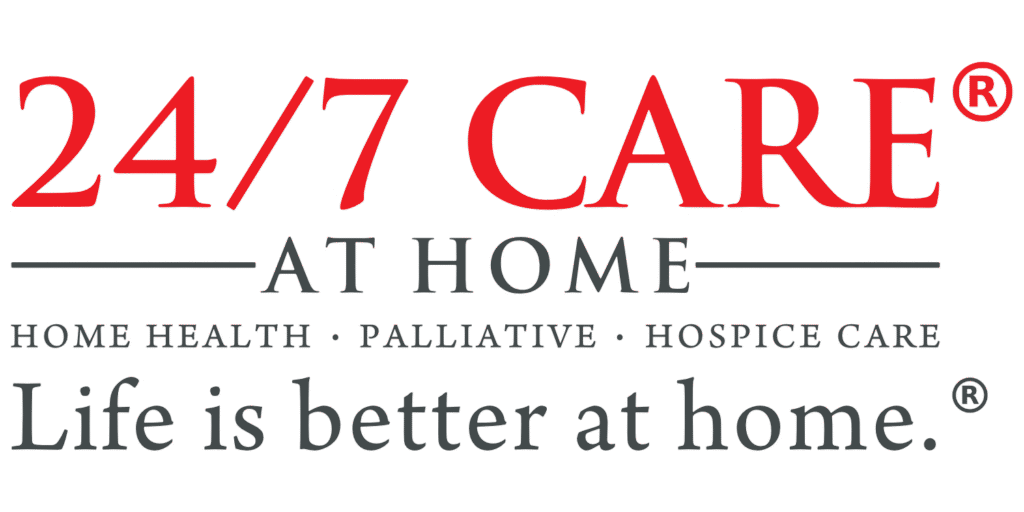Hospice At A Glance
Clear, compassionate information to help your family make the right decision, fast.
What Is Hospice?
Hospice care focuses on comfort and quality of life for people living with a life-limiting illness when the goal shifts from curing disease to relieving pain and supporting the whole person.
Our hospice team provides expert pain and symptom management, along with emotional and spiritual care for both the patient and family. We’re here 24/7 to help families feel prepared, supported, and never alone.
Hospice is a Medicare-covered benefit for eligible patients and can be provided wherever the patient calls home in a private residence, nursing facility, or assisted living setting.
Hospice is not giving up. It’s choosing comfort and compassionate support.

Who Is Hospice For?
You may be ready to consider hospice care when one or more of the following are true:
- A doctor estimates a life expectancy of six months or less if the illness continues on its usual course.
- There are frequent emergency room visits or hospital stays for the same health condition.
- Symptoms such as pain, shortness of breath, weakness, or weight loss are getting worse despite ongoing treatment.
- Curative treatments are no longer effective or are no longer what the patient wants.
- The family needs more support at home to ensure comfort, safety, and peace of mind.
What Hospice Includes
A coordinated care plan designed to each patient’s goals, typically includes:
- Medical oversight from a hospice physician in collaboration with the patient’s own doctor
- Skilled nursing care for symptom relief and medication management
- Home health aide support for personal care (bathing, grooming, and comfort)
- Social work services for practical planning, community resources, and caregiver support
- Spiritual care that honors the family’s values and beliefs
- Volunteer companionship when available
- Medications, supplies, and durable medical equipment related to the hospice diagnosis (eg., hospital bed or oxygen)
- Respite care to provide short-term relief for family caregivers
- 24/7 on-call support for urgent needs
- Bereavement support for the family after a loss
Families often tell us: “We wish we had called sooner.” Hospice is not giving up, it’s choosing comfort and support.


Where Hospice Happens
At Home
Most hospice care occurs where the patient lives. Our team visits regularly and is on call day and night.
Skilled Nursing/ Assisted Living
We coordinate with facility staff to ensure comfort and continuity.
Inpatient/Respite Settings
Short term stays may be used for symptom crises or caregiver relief when needed.
How to Start Hospice (3 Simple Steps)
Speak with our hospice team to discuss needs and answer questions.
We obtain the necessary orders and verify insurance/benefits (including Medicare/Medicaid and most private plans).
Once eligible, we set up medications, equipment, and first visits often within 24-48 hours.
You can leave hospice at any time and resume curative treatments if you choose. If needs change, hospice can also be re elected later.
Common Signs It Might Be Time
- Uncontrolled pain, nausea, anxiety, or shortness of breath
- Rapid decline in function; spending most of the day in bed or chair
- Significant unintentional weight loss or poor appetite
- Multiple falls or new safety concerns at home
- Caregiver exhaustion/burnout
If you’re seeing these signs, call us for a no‑pressure conversation.

Medicare & Insurance Basics
- Medicare covers hospice at 100% for eligible patients, including medications, supplies, and equipment related to the terminal diagnosis.
- Medicaid and many private insurers offer similar benefits.
- Room and board in facilities is generally not covered (unless during certain short‑term levels of care). We’ll explain coverage in plain language before you decide.

Your Team, Your Goals
Every plan of care is built around what matters most to the patient and family, comfort, time together, honoring traditions, and making every day count. We listen first, then create a plan that supports those goals.

Compare Care Options
Not sure if hospice is the right fit today? Explore our quick comparison:
Hospice Care
Comfortfocused care for advanced illness; comprehensive support; 24/7 availability.
Home Health Care
Shortterm skilled nursing/therapy to help recover from an injury, illness, or surgery.
Palliative Care
Symptom management at any stage of serious illness while still receiving treatment.
See our Compare Care Options page for a side‑by‑side breakdown.
Frequently Asked Questions
Is hospice only for the last days of life?
No. Many patients receive hospice for months and in some cases even longer, benefiting from consistent support and better symptom control.
Can we keep our primary doctor?
Yes. Your doctor remains part of the care team and collaborates with our hospice physician and nurses.
Can hospice be provided in a nursing home or assisted living?
Yes. We coordinate with facility staff to deliver hospice services where the patient lives.
What if the patient improves?
If a patient stabilizes or improves, hospice may be paused or discontinued; services can resume later if needed.
Does hospice give pain medication that “hastens death”?
No. Medications are used safely and carefully to relieve symptoms and improve comfort, not to shorten life.
See What Our Clients Are Saying About Us



